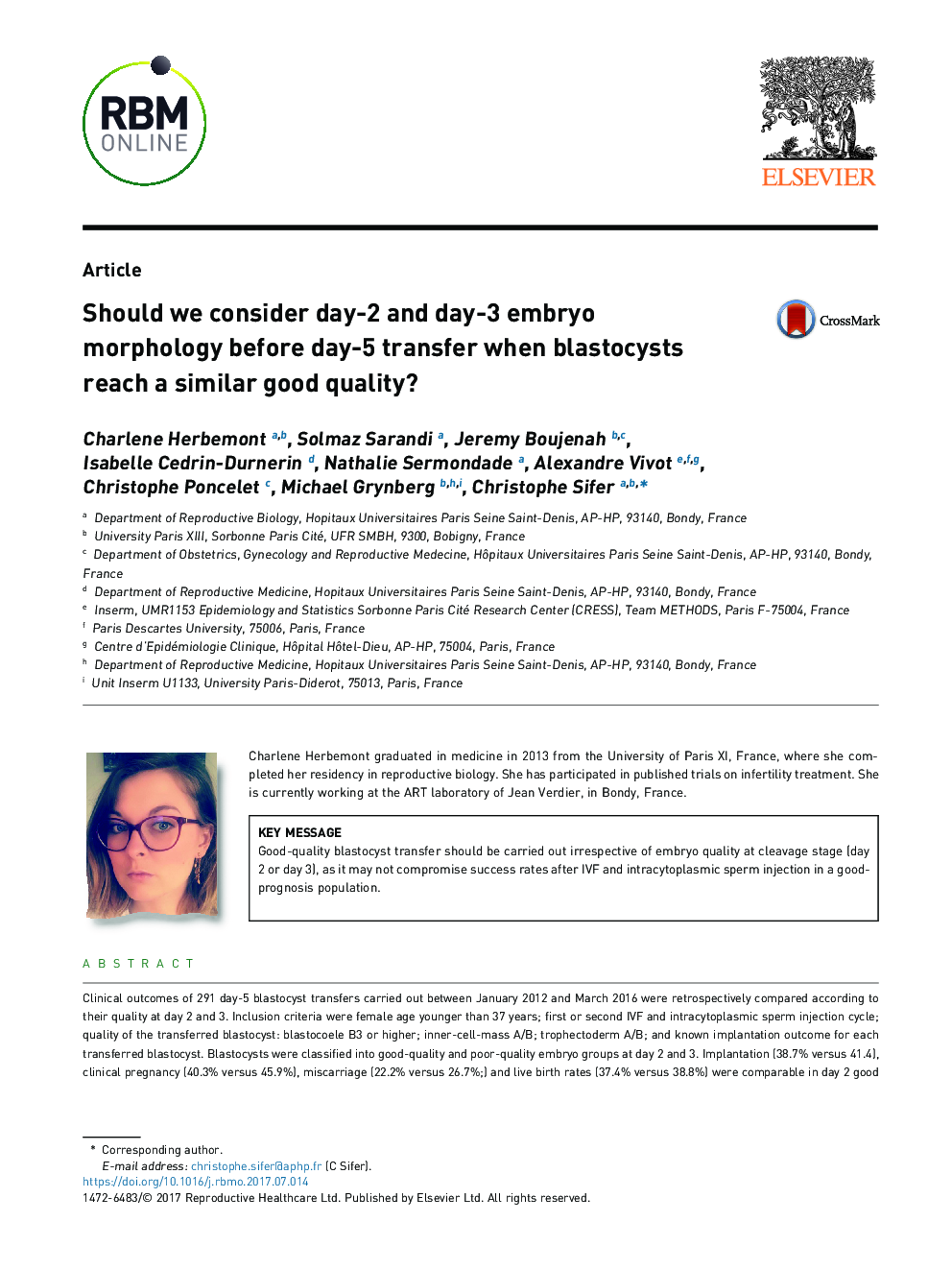| Article ID | Journal | Published Year | Pages | File Type |
|---|---|---|---|---|
| 8784144 | Reproductive BioMedicine Online | 2017 | 8 Pages |
Abstract
Clinical outcomes of 291 day-5 blastocyst transfers carried out between January 2012 and March 2016 were retrospectively compared according to their quality at day 2 and 3. Inclusion criteria were female age younger than 37 years; first or second IVF and intracytoplasmic sperm injection cycle; quality of the transferred blastocyst: blastocoele B3 or higher; inner-cell-mass A/B; trophectoderm A/B; and known implantation outcome for each transferred blastocyst. Blastocysts were classified into good-quality and poor-quality embryo groups at day 2 and 3. Implantation (38.7% versus 41.4), clinical pregnancy (40.3% versus 45.9%), miscarriage (22.2% versus 26.7%;) and live birth rates (37.4% versus 38.8%) were comparable in day 2 good and poor-quality embryo groups. No signficiant differences in morphology of transferred blastocysts at day 3 were found. Multivariable analysis highlighted that poor or good embryo quality at day 2 and day 3 were not predictive of the implantation of good-quality blastocysts (at day 2: adjusted odds ratio = 0.82 CI 95% 0.49 to 1.38; at day 3: adjusted odds ratio = 1.39; CI 95% 0.77 to 2.52). Good-quality blastocyst transfer should, therefore, be carried out irrespective of embryo quality at cleavage stage, as it may not compromise success rates in a good-prognosis population.
Related Topics
Health Sciences
Medicine and Dentistry
Obstetrics, Gynecology and Women's Health
Authors
Charlene Herbemont, Solmaz Sarandi, Jeremy Boujenah, Isabelle Cedrin-Durnerin, Nathalie Sermondade, Alexandre Vivot, Christophe Poncelet, Michael Grynberg, Christophe Sifer,
